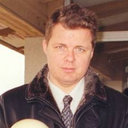Impact of mold on mast cell-cytokine immune response.
Nøgleord
Abstrakt
Molds include all species of microscopic fungi, the spores of which are small molecules, ubiquitous, mostly found in soil with higher rainfall and high humidity, in the atmosphere of urban and rural settings and in decaying vegetation. They originate from pathogenic fungi and have a crucial role in inflammatory response, causing a broad range of diseases. Immune suppressed subjects may develop mycoses caused by opportunistic common pathogenic fungi. Mast cells (MCs) are immune cells involved in the pathophysiology of infected skin, lung, and organs, where there is an increase of angiogenesis. Airways fungi infections can induce allergic lung disease mediated by MCs and other immune cells. In addition, fungal infection may cause and/or aggravate asthma inflammation. Spores are able to navigate in the airways of the lung and can be recognized trough toll-like receptor (TLR) signaling by the innate immune cells including MCs. Activated MCs release preformed mediators including histamine, proteases (tryptase, chimase), pro-inflammatory cytokines/chemokines and they also generate arachidonic acid products. MCs activated by fungi provoke an increases of PGD2 levels and lead to hypersensitivity diseases which present signs such as irritation of the respiratory tract and eyes, recurrent sinusitis, bronchitis, cough and neurological manifestations including fatigue, nausea, headaches and brain fog. Therefore, fungi activate the innate immune response through the TLRs, leading to the release of myeloid differentiation factor 88 (MyD88) which, with a series of cascade reactions, induces the stimulation of AP-1 and NF-kB with subsequent activation of inflammatory IL-1 family members. Here, we report that fungi can activate MCs to secrete pro-inflammatory cytokines which may be inhibited by IL-37, a new anti-inflammatory IL-1 family member.




